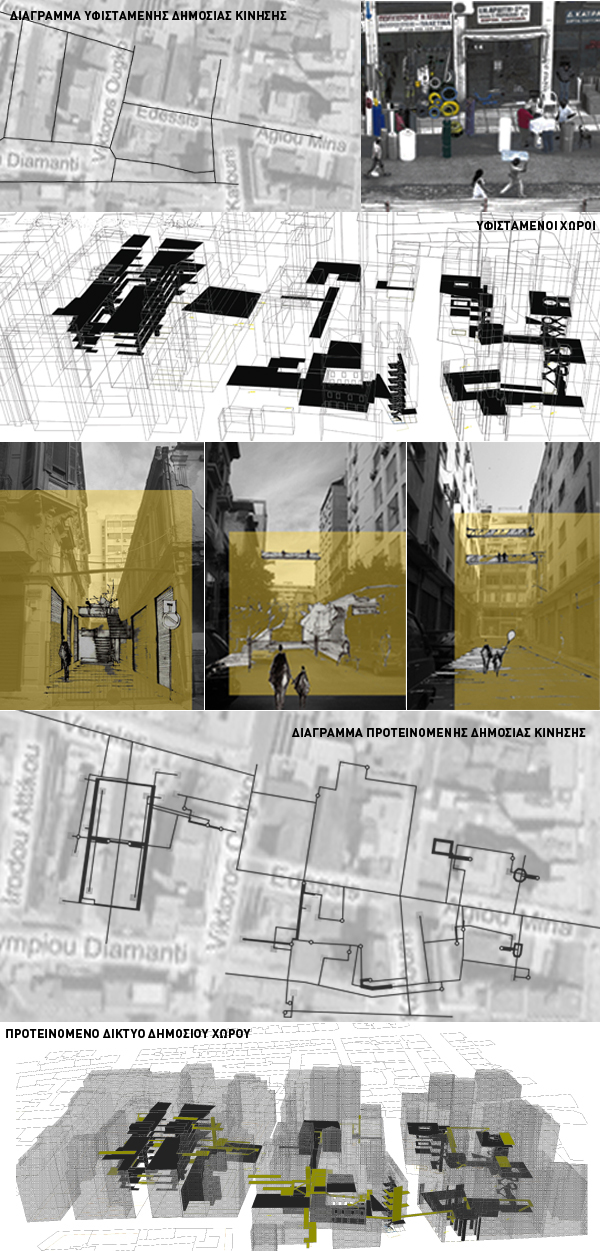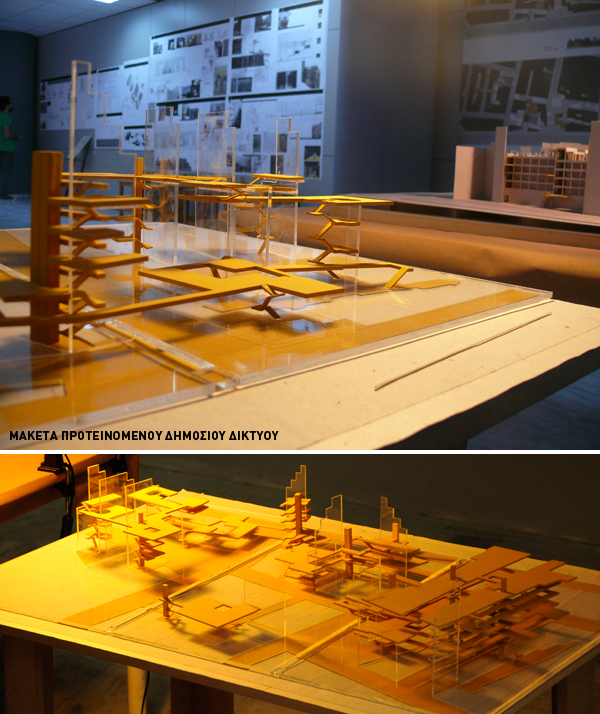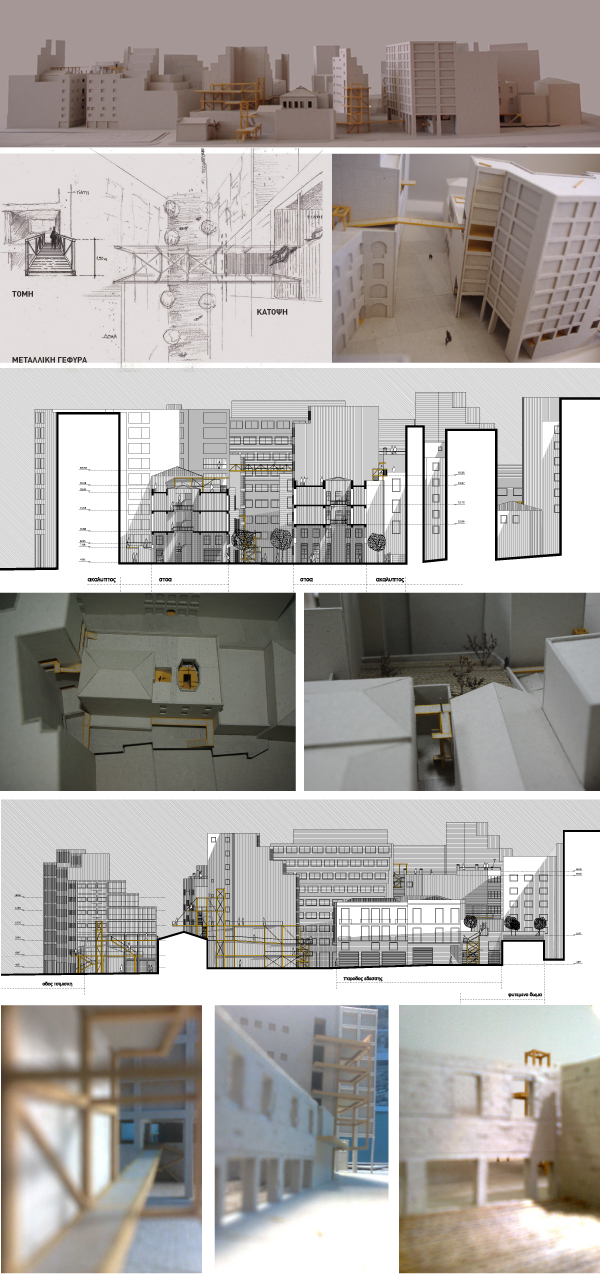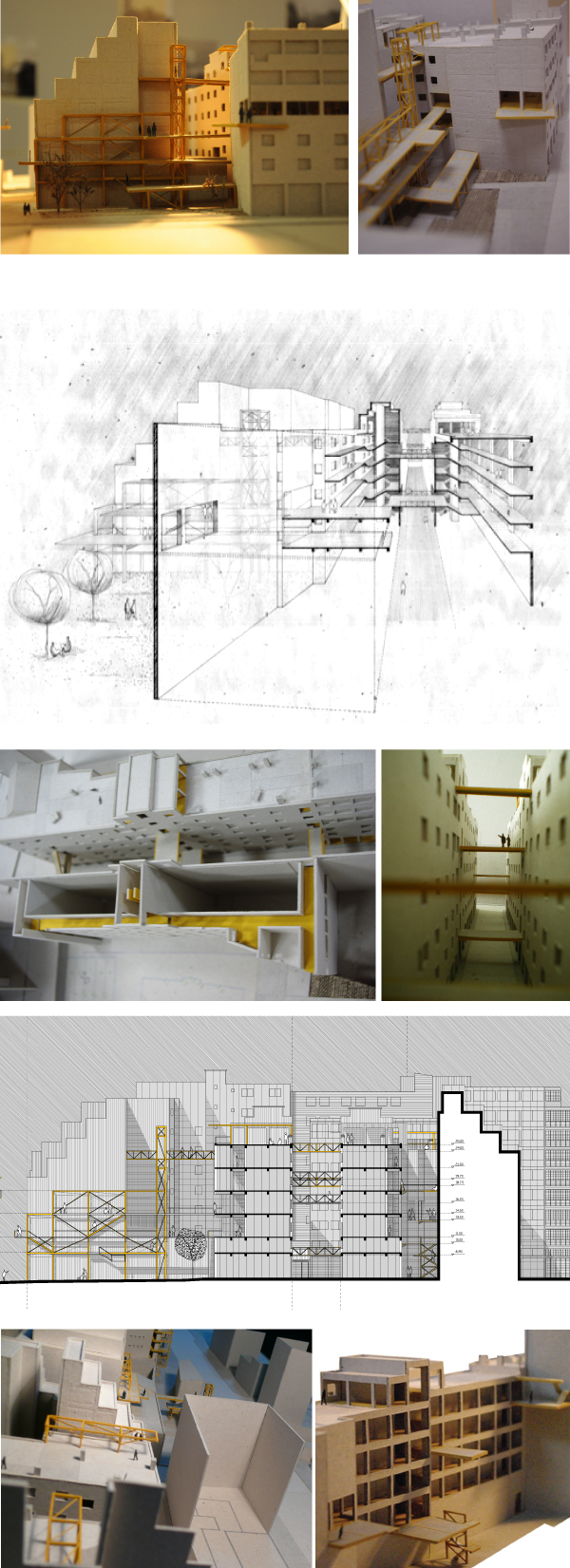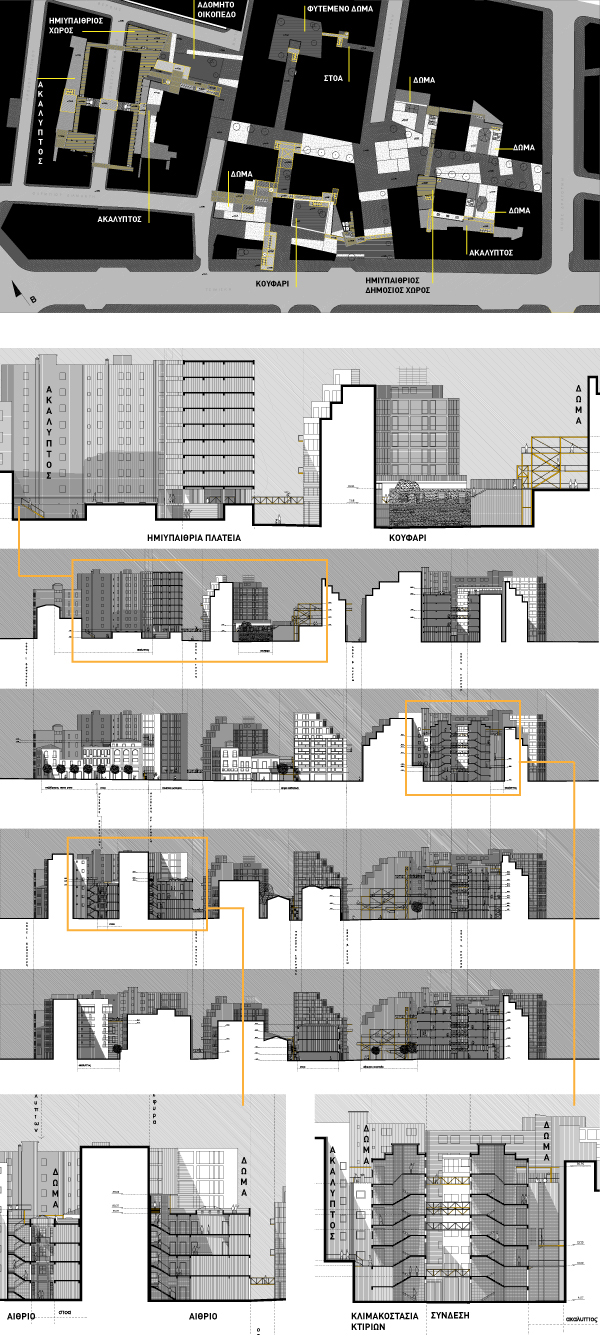STUDENTS PROJECTS
2010
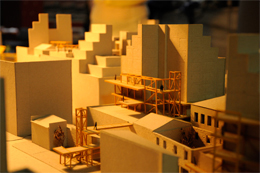
11 February, 2011
Tracing the urban web
Discovering the third dimension of public space.
Students: Aliki Iosafat, Maria Sitzoglou, Despoina Tsireka
Democritus University of Thrace, Faculty of Architecture
presented on 14/07/2010
Supervisors: P. Kokoris, K. Keventsidis, P. Nikiforidis
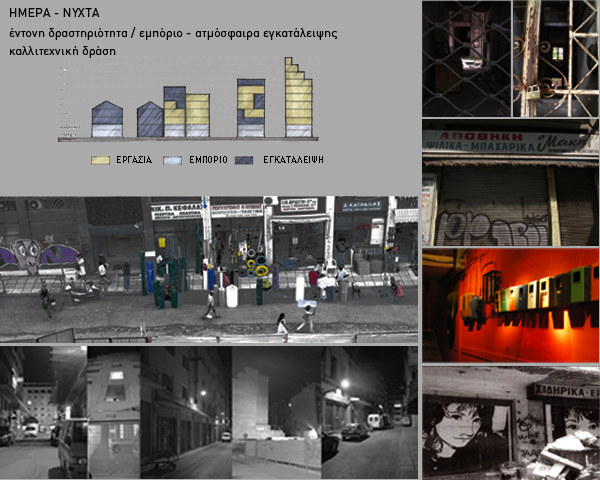
Subject location: Ano Ladadika, Thessaloniki
On the creation of a network of public spaces running through the dense, compact urban web of subject area, as an embodiment of procedural re-conceptualisation of the aesthetic and functional public space within the realm of contemporary urbanism.
This paper addresses concerns about the degrading quality of existing public space caused by structural density; a disproportional human/building sense of scale and the concentration of traffic and social functions at ground level. Although building techniques have encouraged private spaces to grow vertically, public spaces have largely remained limited to the ground level. The central aim of this project is to relocate publicly accessible spaces of any kind along the lines of their vertical expansion, adhering to the formal archetype of a three-dimensional network.
The concept is applied to Ano Ladadika, a district of Thessaloniki that encompasses all kinds of ground-level commercial and entertainment functions, business spaces, a great many abandoned buildings and warehouses, and a sense of urban decay that has led to a severely decreased land value, which, in turn, invited all sorts of art groups to base there and inevitably become active in the area. A result of this agglomeration of wholesale trading and commerce, offices, entertainment venues and artistic endeavours, which operate on different timetables, is a 24-hour effect where the public space's resonance can be said to appear modulated by time on a daily and weekly period. Additionally supported by the lack of residential space, there arises the possibility of intervention, reappropriation and, in a general sense, transformation of the form and function of public space to accommodate the abounding artistic activity in the area without violating or otherwise adversely affecting privacy.
To this end, a search for existing spaces that could be reappropriated and repurposed as public was conducted. In particular, we sought:
- unused, marginalised, and unseen, often as a result degraded spaces (criteria related to character)
- communal or private spaces, within or in between the corpus of buildings (criteria related to location)
The interconnection of these previously autonomous spaces towards the formation of a network is to be accomplished via metal structures such as bridges and stairwells, corridors and platforms, forging thus a web of public traffic at multiple vertical levels, implemented in such a way as to encompass the existing pedestrianised street system.

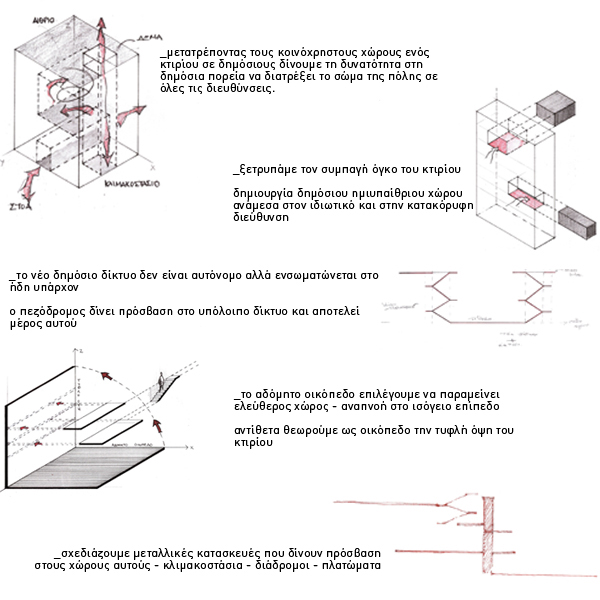
Selected spaces
- Unbuilt plot: As a counter to the tendency to build and subsequently exploit every available piece of land regardless of any concerns related to urban design, informed by the need of free space at ground level, unbuilt plots were designed as green parks.
- The shell building: A two-storey, building made of stone, of which only the outer structure has been preserved, provided the impetus for the creation of a public "protected yard".
- External party walls: The hitherto unutilised faces are considered as vertical plots, on which corridors and plateaus are to be anchored, allowing for multi-level walk while also leaving the ground level unaltered, while simultaneously offering visual relief (a lost quality in dense urban environments) in the form of elevated viewpoints.
- Rooftops: Unseen public spaces that remain inactive shall be endowed with public activity usually associated with parks and city squares, with the added benefits of elevated locations.
- Rear openings: Spaces trapped between buildings of a unique morphology and ambivalent qualities may serve as alternative routes through (as opposed to around) building blocks as part of the city web.
- Indoor shared spaces: As building designs allow, stairwells, corridors and arcades become a part of public motion possibilities by extending street pavements and thus reinforcing a newly created private space front. The atria of classical preserved buildings of the area shall also be connected to this network, providing a stark contrast of aesthetics and conflicting perceptual resonances.
- Private building spaces: Selected parts of private spaces within buildings may be transformed to semi-outdoor social spaces in a bid to interleave the public with the private vertically.
As a result, a vastly interconnected network akin to a collage of existing spaces arises, running through the solid body of the built and offering alternative routes for city drifting and commutes, as well as access to spaces of variable and contrasting perceptual qualities (pict.6). Public space extends to multiple levels of elevation, to spaces where qualities such as the natural element and visual relief are reintroduced after being suppressed by vertical urban growth. Pedestrian circulation becomes three-dimensional and manages to eschew the limitations imposed by planar plotting of stacked constructs. The social functions of a city square or a park are being reintroduced in the form of reappropriated and repurposed rooftops. Finally, the rationale of architecture that is scrutinised in this paper may serve not only as a means of transforming existing space, but also as a starting point for new forms of urban planning.
